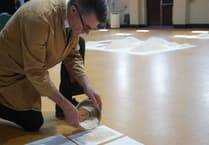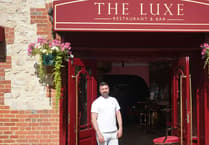The brownfield development site off Old Park Lane is located on a former brickworks between Farnham and Folly Hill and forms part of the former Farnham Castle deer park founded in 1138 by Bishop Henry of Blois.
Mr Ricketts, town councillor for Weybourne and Badshot Lea and town mayor in 2014/15, proposes to demolish the existing stables and riding school - replacing them with a pair of two-bedroom, four four-bedroom and three five-bedroom barn-style homes.
However, neighbours in Old Park Lane have mobilised against the development and a petition titled ‘Say NO to the proposed development at Old Park Stables in Farnham’s Medieval Park’ has mustered more than 200 signatures.
The petitioners state the development will destroy the ancient route of St Swithun’s Way and have a detrimental impact on one of Farnham’s oldest natural habitats, and have also accused Mr Ricketts - an advocate of various environmental causes during his time as mayor - of hypocrisy.
Felicity Hayles, an Old Park Lane resident who launched the petition, is calling on people to comment on the plans online at www.waverley.gov.uk/planning under reference WA/2015/1694 before the October 16 deadline.
She told The Herald: “Mr Ricketts recently opened the sensory garden at my daughter’s school, Folly Hill, and talked about the importance of nature and looking after the planet for future generations. It’s beyond hypocritical what he’s doing. At first it was laughable but now I just find it nauseating.
“Old Park Lane is a private, unlaid bridleway making up part of the St Swithun’s Way and is under pressure as it is, without the addition of nine new homes and the associated cars and construction traffic.
“But the worst part is the effect on wildlife. Nature and the natural beauty of this area is the reason we all love to live here and it’s heartbreaking to see all this development encroaching on that.
“Old Park Stables is just half a mile from Taylor Wimpey’s proposed 120 home development on the Beaver’s Road hop fields, and we are worried Mr Ricketts’ plans will set a precedent for the rest of the countryside between Farnham and Folly Hill.”
Responding to the controversy, Mr Ricketts said: “I believe this petition is deliberately misleading. We are not proposing to put a development on Farnham’s medieval deer park, which everyone knows to be Farnham Park, but we are proposing to redevelop a brown-field site and a former brickworks.
“This site had 100 years of brick manufacture extracting 600,000 cu metres of clay and employing upwards of 100 workers. This closed in 1962 and the site was then used by agricultural and road haulage firms operating articulated lorries as well as an industrial estate and unregulated landfill site.
“These activities continued for 20 years. After this, my family took over the site and has run a commercial equestrian business.
“Since this brown-field site has industrial buildings that are old and in need of demolition and it is not fit for continued equestrian use, we have put forward this planning application which will produce less traffic than commercial business, remediates the contamination [dating back to its time as a brickworks] and safeguards the health of future generations.”
Mr Ricketts added the removal of contaminants such as polyaromatic and petrochemical hydrocarbons, heavy metals and asbestos on the site will likely cost up to £1.5m to clean up for residential purposes.




Comments
This article has no comments yet. Be the first to leave a comment.